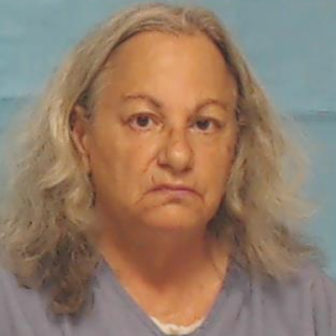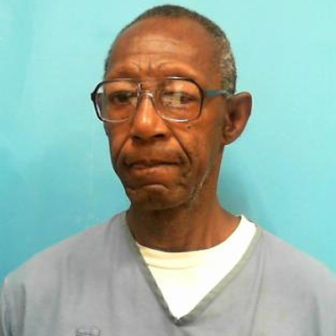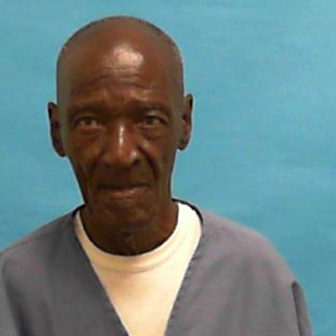MIAMI — An hour south of Miami, down the street from an alligator farm, a security guard buzzes visitors into the Homestead Correctional Institution. Each guest’s bags are run through a rickety metal detector and he or she is issued a panic button — a portable alarm that can be clipped to a waistband and pressed if an inmate attacks.
The visitation room looks like an elementary school cafeteria, its concrete-block walls painted with murals of Marvel superheroes and Minions. As soon as Marian Dolce slides into her plastic chair, flashing a warm smile, it’s obvious the panic button won’t be needed. She’s wearing light blue scrubs. Her white hair is in a jaunty ponytail atop her head. She says she just got a new “bunkie” — a cellmate. She comes off as downright girlish for a 66-year-old murderer.
Dolce was 24 when she shot and killed a man in May 1977. Today, 41 years into her life sentence, she’s the third-longest-serving female inmate in the Florida prison system.
Florida requires that inmates serve at least 85% of their sentences, and the state has abolished parole. That’s resulted in a massive prison population — about 95,000 inmates. Taxpayers now fork over $2.7 billion per year for the Department of Corrections budget — and that’s after expenses have been trimmed. Education programs are almost nonexistent. Only 18 of 50 major facilities have air conditioning. There’s a chronic shortage of guards, whose starting trainee pay is $30,150. Healthcare costs are up to $375M, with an additional $120 million proposed for next year.
Does it do any good for society to keep criminals locked up for decades, mostly to languish? What would the alternative be? JJIE posed these questions to the five men and five women — all murderers or sexual offenders — who have been incarcerated in Florida the longest. One of them entered the system in 1946.
The state Department of Corrections had no comment.
Marian Dolce

Marian Dolce
Marian Dolce moved to Florida to escape cold Ohio winters, not knowing a soul. She brought a gun with her, just in case, even though she didn’t know how to use it. “I shouldn’t have bought it. I don’t recommend guns at all,” she says now.
In May 1977, having secured a new apartment in Orlando, Dolce, then 24, went to a telephone store to get a phone. Later, at a bar, she was surprised to bump into the guy from the store, she said. He was a 30-year-old named Edward Lee Glover. He offered to come over and help install the phone, Dolce said. Around 11 p.m., she shot him.
Amazingly, no neighbors or police responded to the gunshots. “I just left the body there and I went to bed,” she said, chuckling at the absurdity. “It was bizarre.” When she woke up, she still didn’t know what to do, so she drove around. She saw a hitchhiker.
According to old news reports, the hitchhiker, a 22-year-old waiter, said that after she picked him up, they went to her house, where he noticed Glover’s body sticking halfway out of a closet. Dolce threatened to blow him away too, so he loaded the body into a cedar chest and dumped it in a wooded area. He was given immunity to testify at her trial.
Medical examiners took four bullets from Glover’s left chest, two from his head and one from his back. Dolce has always maintained that she shot Glover because he sexually assaulted her. Now, she said plainly, “When he got there, he raped me. He jumped me and raped me. And I took out the gun and shot him.”
But the state attorney prosecuting Dolce postulated that the single bullet in the victim’s back showed Glover had been trying to get away from her. She did not testify at her own trial. Dolce’s attorney argued both self-defense and insanity. Doctors and her mother said she was a paranoid schizophrenic, a diagnosis she says is still attached to her. An issue was made of her once having had an abortion. Dolce was found guilty and sentenced to life in prison.
Sitting in the visitor room this August, Dolce said the newspaper accounts were wrong. She had enticed the hitchhiker by telling him he could keep the dead man’s car and wallet if he helped dispose of the body. “It wasn’t because I was beautiful or anything.”
Once at her place, she vacillated, saying maybe they should call the cops, but the hitchhiker said it was too late and took over. It’s only because he was driving the deceased’s car around that the cops ever caught them, Dolce said. And she’s not a schizophrenic, she insisted; that was just a ruse to help her insanity defense. (Her defense attorney from the case appears to still practice in Florida but did not respond to an emailed request for comment for this story.)
With both mental illness and sexual assault taken more seriously today than in the 1970s, and Florida’s Stand Your Ground law protecting shooters who kill because they feel threatened, Dolce’s case might have had a different outcome if tried today. But Dolce doesn’t dwell on that.
“Day after day went by, and 42 years just crept upon me. I’m just waiting to leave. I’m just going with the flow,” she said matter-of-factly.
Dolce sleeps through breakfast and wakes up in time for 8 o’clock count. Then she does her assigned job, wiping down tables and railings in the dorm. It only takes about 20 minutes. After that, she reads — usually mystery novels — until lunch, where all 600 or so inmates eat at once. Inmates are allowed to walk around the dorm, so occasionally she goes down the hall where she can use one of the two computers if it’s available, or to the library to get a new book. Her brothers, a podiatrist and a chiropractor, send her money — $300 every two months — so she might order something from the commissary catalogue, mostly coffee. There’s nothing to do until dinner. “It’s too hot to exercise, so I just lay around my room,” she said. In the evening, a few dozen inmates come to the common room to watch TV, often “Law & Order” or “Family Feud.” And so it goes, day after boring day.
Dolce said that Homestead is the best of the Florida prisons she’s been assigned to because there are individual rooms instead of big bays housing dozens of prisoners together. In her room she has a cubby, where she keeps stationery, books and her three sets of clothes. There are never any birthday cakes or funerals. Dolce has taken classes in parenting, anger management and business administration, but education programs have been cut in recent years. Inmates used to decorate Chrstmas trees every winter, but that practice was stopped, though they still get the day off work, Dolce said.
Guards can be friendly, but Dolce doesn’t get close to them. Some inmates develop romantic relationships with one another, but not Dolce: “Not any more.” Her only focus is not to mess up.
As far as inmates go, she’s lucky — because of the year she committed her crime, she’s among the 4,117 who actually has a shot at getting released on parole. Florida eliminated parole for most crimes in 1983.
Michael Wade

Michael Wade
When Michael Wade — Florida’s third-longest-serving male inmate — first entered the system in 1966, “the institution was like a small city,” he wrote in an email from the Reception and Medical Center, a prison with a hospital in Lake Butler. “There were some things that were simply not believable today.”
Every inmate was given a job, which he performed five days a week. Inmates might be carpenters or painters, or work in the tag plant, where license plates were made. “Or he might be assigned to the hospital. Believe it or not, he would be treating other inmates.”
There were no telephones, and only immediate family members were allowed to write or visit, but there was a canteen where inmates could order food. Profits from that were used to buy TVs and recreation equipment. Movies were shown at least twice a week. Inmates had instruments. There was a band. Wade earned a GED diploma and taught his illiterate peers. He became clerk to the history teacher and band director. At night, he took community college courses that were paid for by the federal government. He earned an associate degree.
But in the 1970s and ’80s, cocaine and crack transformed society. A “tough on crime” mentality took hold. The public began to complain that prisons were like country clubs. Tough sentencing requirements stemming from President Reagan’s War on Drugs led to a boom in the prison population. In the 1990s, President Clinton signed a bill prohibiting inmates from using Pell Grants for education, and Florida stopped using profits from the canteen to pay for TVs, fitness equipment and instruments.
When Florida effectively abolished parole for anyone who committed crimes after Oct. 1, 1983, prisons got full. In 1989, the Florida Legislature created the Control Release Authority, to keep it manageable; in four years, 75,000 inmates were released. Following more public outrage, mandatory minimums came into vogue.
The state built more prisons. “Their answer to the crime problem is akin to solving the DUI or the opioid problem by building more and larger graveyards!” Wade wrote. Given the challenges of budgeting to house and feed so many people, programs were cut. An investigation by Gatehouse Media this summer found that Dade Correctional Institution, in Miami-Dade County, had only one teacher for 1,500 inmates. Guards are so difficult to hire that the Department of Corrections this year lowered the hiring age from 19 to 18.
Wade wrote the urge to imprison people forever is misguided. “At the beginning, all you want to do is get out. The thought consumes you day by day. Then, slowly, bit by bit, getting out becomes less and less important until one day, you realize it's not important to you at all. Oh, it would be nice to get out; just not important. You realize you've built your own life, not out of what you'd like, perhaps, but out of what's been given to you.
“That is where those who would ‘throw away the key’ go wrong. Their philosophy is bankrupt. It is because of this: there comes a point where incarceration ceases to be a punishment, but merely another form of welfare! Man is a remarkedly adaptive animal. He will adapt to any environment he is thrown into, given time. What is abnormal in the beginning becomes normal over time. In my case. After so long a time, what can they do except pay my bills?”
Wade understands that sentences, to some degree, are designed to provide justice for victims. But vengeance shouldn’t dictate policy, he says. “No one is denying or belittling sympathy for those who are victims of crime. But that sympathy is not an absolute one. By this, I mean that there is a limit to what we can, in a realistic manner, cater to those feelings of hurt. This is not meant to be hard-hearted or anything, just realistic.”
Wade, now 72, has suffered a series of strokes. He spends 10 to 12 hours a day listening to audiobooks; he’s currently in the middle of a fantasy series called “The Malazan Book of the Fallen.”
“Every once in a while I find someone with a tablet who will lend it to me to play a game or two. I watch very little TV and do not listen to the radio (unless there is a UF football game on. Smile.) I am ‘addicted’ to 25 x 25 Sudoku puzzles. Other than that, I sit in my wheelchair and look out the window. Most of my thoughts are of trivial matters. The usual day to day stuff. I seem to be just passing time; waiting for the next meal or the next count. Waiting for the lights to go out and so, to go to sleep.”
He has no idea if his brother or sister are alive. The Department of Corrections allowed him free electronic “stamps” for Hurricane Michael and Christmas, so that he can send emails, but he has no one to use them on, he wrote.
Does that sound sad? Consider his crime.
“I am not proud of what I did, nor can I bring myself to talk about it,” he wrote. “Even at this late date. You can look it up if you want.”
Wade set fire to a grocery store when he was 11 years old, and to an Ybor City crate factory a few years later. He was sent for 14 months to the Arthur G. Dozier School for Boys (which closed in 2011 following investigations into decades-long abuse and deaths of inmates). Then he raped a woman at gunpoint. Deemed insane and a menace to society, he went to a mental hospital for 18 months and was let out in July 1965, when he was 18.
“I don't remember any anger or lack of love, just a lot of narcissism and the feeling that I was entitled to do whatever I wished,” Wade explained. “Very little was done out of anger. There was no planning, just compulsion as far as setting the fires was concerned. In other areas I was completely out of control. I stole things if I wanted to. I would just do as I pleased without a concern of others. Just to do wrong was a satisfaction for me.”
When he was 19, in 1966, Wade met a 16-year-old girl at a teen dance in Clearwater, drove her to a makeout spot and killed her with a blow to the head. He was deemed competent enough to stand trial and found guilty. At that time, all murderers and rapists received the death sentence unless a jury recommended mercy. The jury spared him.
Emmett Paramore

Emmett Paramore
An envelope addressed to this reporter arrived from Emmett Paramore. Inside was an Easter card — a cartoon bunny carrying a picnic basket. From that fell a piece of paper that had been unfolded and refolded so many times it had become soft and fuzzy, like a peach. It was a court paper he’d been holding onto since 1972, listing every inmate on Death Row at the time, including himself.
In May 1967, Paramore and his friends had been drinking,passing around a bottle of booze on a Miami street. When a bakery truck pulled up and the driver went into a store, they ran into the back of the truck to steal pastries. The driver came out and fought them. He was fatally shot. A witness fingered Paramore, who was 17 at the time, as the shooter.
He gave police a videotaped confession, saying, “I hardly knew I had the pistol in my hand until it fired.” Old news articles say his trial was the first time in the history of U.S. jurisprudence that a video was shown to a jury. His defense attorney argued the statement was coerced. The jury returned a guilty verdict nonetheless. They did not recommend mercy. While behind bars, Paramore was also accused and convicted of a strongarm rape, committed before he was imprisoned, which also carried the death sentence. He was fated for the electric chair.
But in 1972, the U.S. Supreme Court decided, in a case called Furman v. Georgia, that capital punishment was unconstitutional because it was often imposed arbitrarily and discriminatorily. Each state was to decide what to do with its inmates who’d been sentenced to die. Florida had 90 of them. Some were released, but not Paramore. (The death penalty would be reinstated years later.)
In recent communiques, Paramore, 71 and Florida’s fifth-longest-serving male inmate, insisted he is innocent, noting that police killers and white men guilty of multiple murders have served less time. He called his predicament “high-tech Jim Crow lynching incarceration.” It’s not the prisoners, but the imprisoners, who have the problem, he suggested: “They need to focus on reforming the people that want to punish (correct) the criminals to change,” he wrote.
His mother died in 1978, his sister in 2013. To get necessities like shaving cream and deodorant, he begs other inmates, often having to give them food off his tray or to clean up after them.
“Don’t worry; I am going to outlive those bastards,” Paramore wrote, quoting late U.S. Supreme Court Justice Thurgood Marshall. “I still have hope and I am optimistic. Something good will come for me.”
Ernest Spry

Ernest Spry
Paramore’s fellow prisoner Ernest Spry — Florida’s second-longest-serving male inmate — was sentenced to life in February 1966 after he and two friends tried to rob the Crowbar Tavern in Fort Lauderdale. Spry pled guilty, claiming he’d accidentally fired a 12-gauge shotgun. Records indicate he was let out but booked again in 1976 for aggravated assault/battery and possessing an illegal weapon. In 1993, he was sentenced for aggravated battery with a deadly weapon.
Spry, who is now 73 and legally blind, wrote in a short letter that “these 40-plus years has been tuff, harsh and heartfelt.” He complained of overcrowding: Seventy-one inmates are kept together in his dorm, jockeying for shower time, “while the officers sit under pavilions, laughing and sitting all day,” he wrote. “The problem in here is the officials that work in here who are not trained to help reform the prisoners. The officials walk around and antagonize, harass.”
Ondina Williams

Ondina Williams
Honduran-born Ondina Williams is the second-longest-serving female. In 1975, she and her husband robbed a Miami Beach supermarket. Mid-robbery, a policeman fired shots that killed the store manager. Held responsible for the death, Williams and her husband were each sentenced to life in separate prisons, with a requirement that they serve at least 25 years.
Williams’ husband, a plumber on his prison work crew, managed to escape in 1977. A month later, he showed up at Lowell Correctional Institution in Ocala, cut through razor wire and sneaked into the cafeteria, where he knew his wife would start work at 5 a.m. Using a handgun, the couple forced 14 inmates and two guards into a boiler room, where they handcuffed the guards to a pipe and locked in the others. They were caught in New York weeks later, after robbing more stores. She got 15 extra years tacked onto her sentence. She said the prison system “used to be a correctional system. Now it is a human warehouse!” She just wants to be released and deported to Honduras. A sister would pay for her plane ticket.
Annita Kennedy

Annita Kennedy
Annita Kennedy, 84, has been incarcerated since March 1978 for shooting her ex-husband, allegedly for his insurance money, when she was 42. Kennedy wrote a short letter denying that she’d ever shot a handgun and suggesting she wouldn’t have much to say to a reporter. “I am a very ‘dull’ person,” she wrote. “I am a ‘country’ person and know nothing about city ways, drugs, drinking or party!!! All I ever did was work my a___ off to feed and raise 6 children. (The eldest is 66 now!) who are too busy for me now!” Of being among the longest-serving women, she said: “What a brag, huh?”
The rest
Four of the 10 inmates contacted did not respond: John Thomas has been in since May 1967, when he was 25 and sentenced to life for murder. Florida’s longest-serving female inmate, Julia Rollins, now 81, has been incarcerated since August 1972 for shooting and killing a 24-year-old woman in a bar, when she was 33. Marilyn Roberts, a Cleveland nurse who’d been having an affair with a pilot, in 1981 lured his wife into a car in Hollywood and shot her.

Junias Benjamin
And Florida’s longest-serving prisoner? Junias Benjamin was born on Christmas Day 1925 and began working in the fields as soon as he was able. He never learned to read and write. The Miami Herald profiled him in 1993 — he was the longest-serving inmate even then.
In November 1945, he was charged with raping a 5-year-old girl in St. Lucie. A doctor testified the child was so seriously injured that she could never have children. Benjamin was convicted of sexual battery and given a life sentence.
But he was let out in 1957. The next year, he was arrested for slapping a 7-year-old girl after trying to get her to go to a rooftop with him for a dollar, but charges were dropped. In 1966, he ripped the underpants off a 7-year-old girl. A prison intake officer wrote that Benjamin had such a low IQ, he could never function in society. Another officer described him as “a pitiful case, and it appears that he is constantly being manipulated by other inmates in return for sexual favors.”
Now 93, Benjamin did not respond to requests. Records from the Department of Corrections suggest that he is in a medical unit.
Potential solutions
Once the prison doors clinked shut behind Marian Dolce, she didn’t have many options. She hasn’t spoken to an attorney in years; public counsel is only afforded to inmates facing the death penalty. Online court files show she filed her own, handwritten motions for postconviction relief, but was denied.
Clemency, or commutation of sentence, can be granted by the governor and his cabinet, but that’s rare, and prisoners must have served one-third to one-half of their sentence to be eligible. Otherwise, under Florida law, prisoners must serve at least 85% of their sentence, regardless of how much gain time (time for good behavior) they have accrued.
Florida’s Commission on Offender Review — a three-person commission that meets about 36 times a year — does release some inmates for medical reasons, but only if they are deemed “terminally ill” or “permanently incapacitated.” FCOR also oversees that process. Director of Communications Kelly Corder explained that following a series of hearings, including some where victims, their families and the inmate’s family can testify, the commissioners make the final decision. Pointing to Florida law, Corder said, “Release from prison to parole is considered an act of grace, not a right, and shall not be done as a reward for current behavior.”
In 2022, Dolce will have a parole interview. If all goes well, she could potentially be released in 2025. Spry, Wade and Paramore have each had parole denied, but will have interviews again in the coming years. Benjamin has an interview next year — but his presumptive parole date is not until 2075.
Lately, reformers have hoped that Florida’s criminal justice system might be on the cusp of big change. The year 2019 brought a new governor, a new head of Department of Corrections and a new head of the Department of Juvenile Justice. Even many right-leaning, tough-on-crime stakeholders conceded that changes were needed.
This past spring, legislators did consider a bill nicknamed Florida’s First Step Act, the state’s own version of the national First Step Act — a measure that encourages inmates to take skills classes and be released early, and expands options for halfway houses, home confinement and compassionate release. It also gives judges more leeway in sentencing,
Drafted by Republican state Sen. Jeff Brandes, who is perhaps Florida’s most outspoken leader on criminal justice reform, the Florida version called for giving judges discretion over certain drug crimes and letting inmates out after serving 65% (rather than 85%) of their sentences.
Reached by phone, Brandes said of long-serving inmates, “There are a lot of things we can do in this space.”
He suggested looking at best practices in other states. Mississippi, for example, modified its conditional medical release policy. Florida could similarly expand its definition of debilitating illness to be a non-terminal one that significantly impairs functioning, Brandes said.
He’d like to see extremely long sentences reviewed after a certain amount of time. That would be up to state attorneys’ offices in individual districts. Areas like Jacksonville and Tampa have recently elected progressive prosecutors who are instituting conviction integrity units, which are meant to prevent and correct false convictions.
There might be some instances where it makes sense to send sick or elderly inmates to less restrictive facilities, such as nursing homes, Brandes said. Though, in some cases, “They have no place else to go and their families are gone. It sounds strange, but the humane thing to do would not put them in the street, but continue to be serviced in the prison.”
As far as rehabbing inmates, “Every time we talk to the wardens, they mention program services and filling inmates’ time with meaningful, constructive activity as a top priority — we just don’t have the resources,” Brandes said. He did manage to get 20 teachers added to the state budget this year. He’d asked for 40.
Brandes says he’s hopeful that the new secretary of the Department of Corrections, retired Army Maj. Gen. Mark Inch, now has a good understanding of the system and will soon push for reforms. Inch has said his priorities are addressing the attrition rate for officers — now 36% — and dealing with violence, health care costs and aging infrastructure. He did not respond to an interview request for this story.
Brandes vowed that he will continue to introduce a comprehensive bill every year he’s in the legislature, to tackle the 85% rule, parole, fines and fees, expanding conditional medical release, paying guards more, and providing job training and reentry services.
“There’s no silver bullet,” he said. “We need a complete overhaul. There are multiple pieces. If you just do one thing, it’s like Whack-a-Mole — other problems pop back up. You need a comprehensive plan and a multiyear strategy.”
Deborrah Brodsky, director of Florida State University’s Project on Accountable Justice, said, “The overall issues of the Florida prison system are exacerbated by the large population of aging, elderly, infirm people.” Her organization found that on June 30, 1999, there were 5,082 elderly inmates (age 50-plus) in Florida prisons. On June 30, 2014, there were 20,753.
Especially given the costs of health care, “We should be looking at every opportunity to release some of the pressures,” she said. Much could be done on the front end, like getting rid of draconian sentencing rules or letting people serve just 65% of their sentences.
Prison records on the 10 longest-serving inmates show that many were written up for misbehavior frequently early in their incarceration, but then had years without a single writeup. Brodsky said that’s not surprising. She pointed to criminological studies on recidivism that show most people age out of criminal behavior by age 30.
Florida clemency and parole lawyer Reggie Garcia, who has written two books on criminal justice issues, said, “There is an emerging bipartisan consensus that we are at a crisis point at our 56 major state prisons. We have too few correctional officers plus gangs with lots of power, so a major incident could happen literally any day at any hour.”
He lauded the state legislature for new laws that will result in more data collection and increase the felony threshold for grand theft from $300 to $750. Going forward, he thinks there’s a slim chance of the legislature expanding parole, but momentum for extending conditional medical release to inmates who are nonviolent, elderly and infirm, and not a threat to themselves or others. (One such bill was introduced by Brandes this year but died before passage.) A prison in Zephyrhills houses so many infirm prisoners that it is “almost a mini hospice unit,” he said.
Marian Dolce doesn’t have an easy answer. “If you commit a crime, you should go to jail,” she said. “But you shouldn’t be locked up forever. Ten to 15 years for a [fake] check? Life without parole for killing your husband who was beating you?” Keeping her locked up any longer is pointless, she said. “I’ll never do it again!”
If she got out, she would be content to eat good food, like pizza and scrambled eggs, sleep on a comfortable bed, and go on a cruise wherever her brother would take her. Asked whether she could do something good for society, she said, “Not really. I’d just live off of someone, be a parasite.” Then, considering her current situation, she said, “I am a parasite.”
Michael Wade likewise thinks prisons have their purpose. But they’ve become even worse than warehouses, in his view: They’re “recruitment center for gangs. People come in basically normal and leave as nothing more than sociopaths or worse. They learn nothing but how to commit crimes in a more efficient manner. It is my personal opinion that if you keep a person in prison more than a decade, it would be a crime to let them out at all.”
This project was collaboratively produced with Jaxlookout and underwritten in part by The Vital Projects Fund.

As a family member of a few inmates, I feel that if they commit a crime they should be punished but to be in prison for 25 plus years should be punishment enough. I can say that one has changed from the 23 year old man that he was back then to a more humble 50 year old now. He regrets his decision that placed him there. I just think that some inmates deserves a second chance.
I was adopted when I was a little less than a week old. Never met my mother. She died in December of 1974 when I was 8 years old. The previous month the woman who took me in as a baby died.
For years I searched for my father. Only to turn up sad and heart broken. Finally one of my biological aunts found me. During a conversation with her I asked her if she knew my father. To my surprise she did.
I asked her did she know where he was. She said no but i know his girlfriend who works at a local walmart. She said the next time I go to walmart I will ask her where he is.
A few months past it was a hot day in Ohio as I sat on my front porch. Back then the house phone was still popular. The house phone rings on the end a voice says hello. I knew it was my dad and the tears automotically began to flow. I felt like a teen age girl talkimg to her first real love.
My aunt had found his girlfriend and gave her my number who in return sent it to my dad. The Chaplain allowed him to call me.
The call was short yet we both were so relived and elated to have spoken to one another for the very first time in our lives. This was 1992.
In 1994 At the age of 28 i met my father for the very first time at Stark Correctial Institution .
As the years pasted we became closer and closer. The love I have ontinues to grow.
In 2009 I visited my father again. Years have pasted and hes gotten older and has become very sickly.
Each parole or whatever theyre calling it now he has been denied. Ive even spkoen to his accuser who in so many words denied he did the things he was charged for. Nothing can be done with her now since the statue of limitations have expired.
My fathet inmate 022256 has been in the Florida Criminal Justice System since 1983. He is now 70 years old. He has heart problems, chronic lung disease, high blood pressure, kidney problems and once suffered with Covid -19.
State of Florida laws must be reviewed and revised. Continuing to house inmates such as my dad with fsiling health is a strain on tax payers and the inmates families.
With the exception of multiple murderers two or more prisoners should not be in prison beyond the age of 80-years old. Over a span of 35-40 years the majority of prisoners have undergone attitudinal changes. To have a 93-year old prisoner makes no sense whatsoever and is sadistic. Given the prison sentences others get for murder in other states there needs to be a uniform sentence in the United States not the great differences there are now.
Pingback: Medical Release Decided by Florida Commission That Doesn’t Meet Such Inmates – JaxLookout